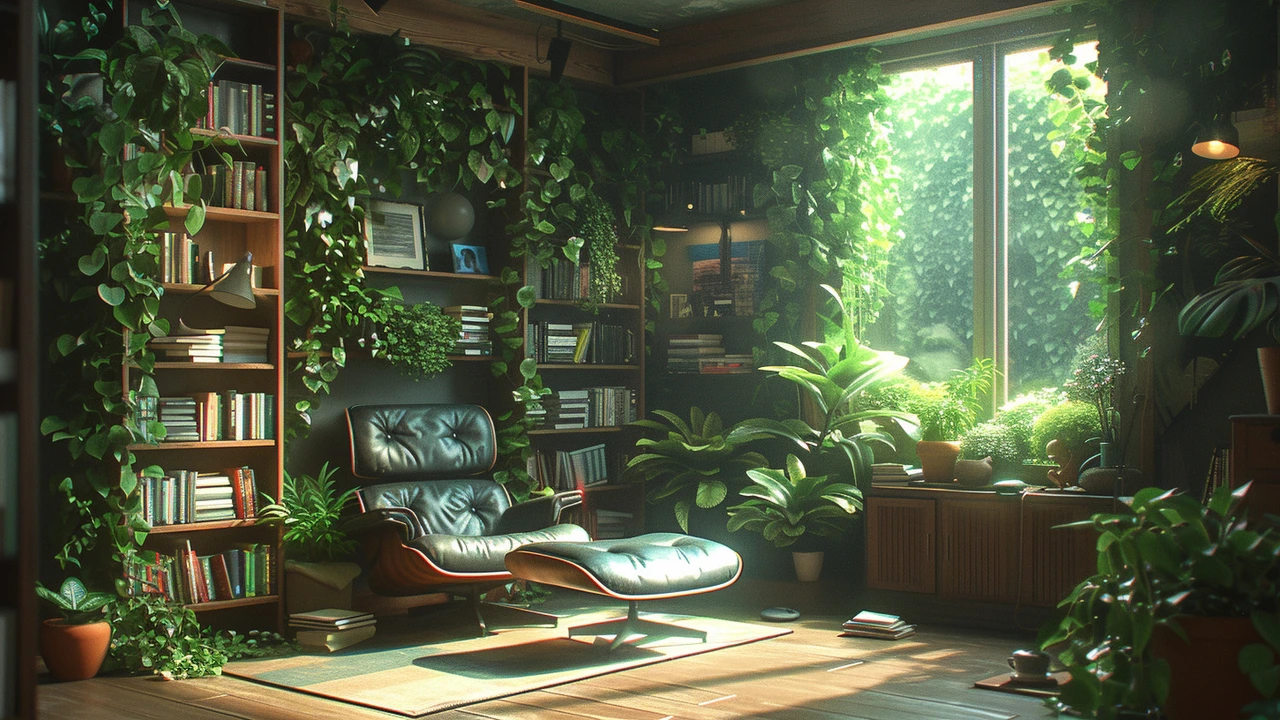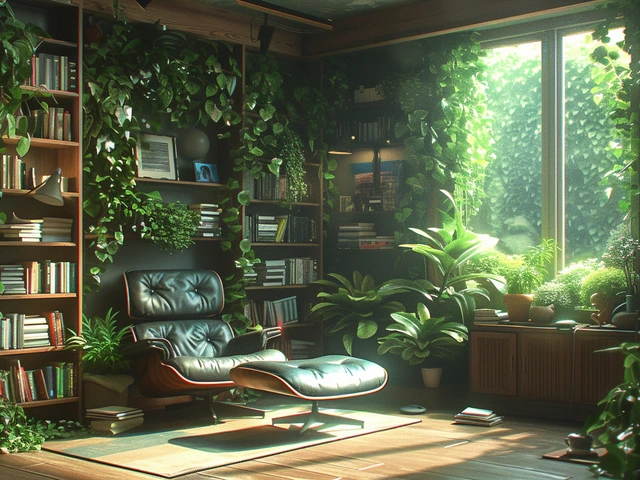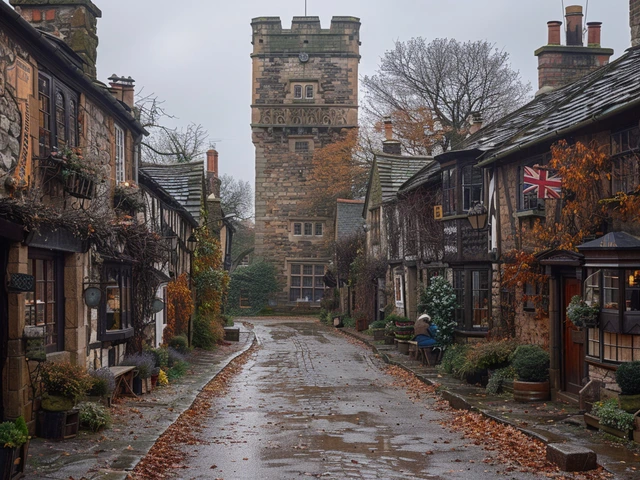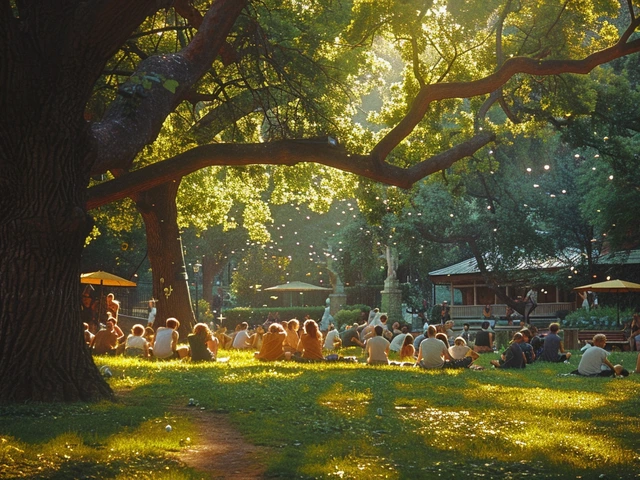The Revival of the Past Design Trends
With my keen love for interior design, I’ve been musing lately over a fascinating trend I’ve noticed taking root. It’s what we might call a revivalism, the resurgence of past design trends. It’s astounding to watch as styles that we all assumed to be of a bygone era make a return in bold and vivid manners. It’s like watching the past come alive in the most serene yet invigorating manner.
Think about it. There is a certain charm in the past that we all find irresistible. It’s like trying to comprehend a story told decades ago through the lens of the storyteller. A sense of nostalgia, a déjà vu moment that awakens a bit of history within us. It doesn’t matter if you’re reviving your childhood memories of Vivienne, Jasper and I sitting around the fireplace, or if it’s a case of a fashion enthusiast looking to revive styles from the 80s or 90s. In all cases, this fascinating curve upon which history repeats itself serves as a potent inspiration for the future.
The Old and New: How They Blend in Interior Design
The current trend of revivalism in interior design doesn’t merely focus on reproducing the old in a copy-paste fashion. Instead, it ingeniously marries the old and the new to create a blend that’s both synergistic and elegant. This becomes a breath of fresh life into the sometimes monotonous universe of modern design, sparking intrigue, and fostering an appreciation of the aesthetic that extends beyond temporal confines.
Let’s take a trip down memory lane to the past – the mid-century, late 60s to early 70s, where design was a balancing act of form and function. The mantra was simplicity! It was all about clean lines, gentle organic curves, and a mix of different materials. Fast forward to today, and we see these elements finding their way back into contemporary design. But it’s not a mere carbon copy; instead, it’s an excellent blend of then and now offering a unique and updated version of past designs that consumers find invigorating. This, my friends, is how revivalism is shaping the future of interior design.
Intricacies of Merging past trends into Modern Spaces
Integrating past trends into modern spaces requires a subtle finesse. You have to strike a balance, maintain a continuity without the design feeling out of place. The objective here is not to create a time capsule, but rather a taste of the past, flavoured with modern aesthetics. For instance, a slick, modern kitchen can be perfectly accentuated with diner-style stools from the 50s.
Remember the floral wall paper that filled your childhood home? I remember my oldest, Vivienne, being fascinated as a kid by the flower-patterned walls in her room. Yet, can you imagine plastering a current home with the same design? Not quite. But what about using the wallpaper on just one statement wall or in small corners, giving your current home a whisper of the past? It's all about subtlety when merging trends.
Revivalism: A Nod to Sustainability
What if I told you that beyond the mere aesthetic appeal, the revivalist trend in interior design is also a nod towards sustainability? Yes, you heard it right. By choosing vintage or previously used items, we are redrafting their lifecycle, thereby reducing resource-intensive production of new items. Now, who would not want to go a step further and contribute to about this commitment to environmental conservation?
I remember when Jasper, my mischievous yet environmentally conscious toddler, would point and stutter, "Re...reuse, mama!" whenever I'd take out something old from the cellar. Today, he’s a grown lad with the same passion. It's a life lesson we can all learn from: value in the old, recycling the "retro", and the beauty of revivalism! Beyond aesthetics and nostalgia, it's a potent symbol of our growing collective consciousness about the environment we live in and our urgent need to conserve resources.
The Groundbreaking Influence of Tech in Revivalism
But we can't talk about the future without giving a nod to the groundbreaking influence of technology. The tech world has made it easier to breathe life into vintage designs in a way that appeals to the futuristic mind. An example of this is the 'smart' re-imagining of retro devices. Consider our old friend, the gramophone. Once a bulky physical device, it is now recreated as a sleek centerpiece to stream music digitally. In that way, we can have the best of both the past and the future.
I used to love listening vintage vinyl records of classic jazz with my husband. From Billie Holiday to Louis Armstrong, those smooth rhythms spinning from the gramophone made us feel the warmth of nostalgia. Today, we're streaming digital renditions of those old classics through our retro-inspired speakers - staying true to our love for jazz and the past, while embracing the conveniences of the present.
Revivalism – A Never-Ending Cycle
Revivalism in interior design is not a stagnant trend but rather, a never-ending cycle. Just as fashion trends come and go, so do interior design patterns. Styles from the past reappear with a new twist, catching the admiration of those who might not have even lived in the era whose design they now appreciate. It’s about keeping the dialogue between past and present alive while inspiring the future.
So here we are, caught in this fantastic cycle of revivalism. A unique instance of the past influencing the future, shaping our design aesthetics and moulding our ideas. As a lover of design and history, I say embrace the past in shaping your future, revel in the riveting movement of revivalism. Who knew looking back could provide such a stylish leap forward?





Leave a Comments